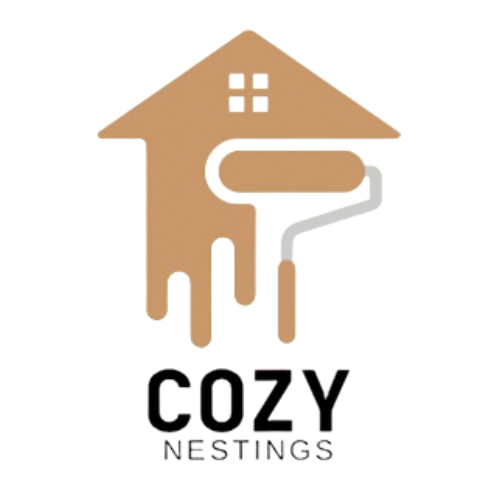What Is a Ceiling Fan and can you have a ceiling fan in the kitchen?
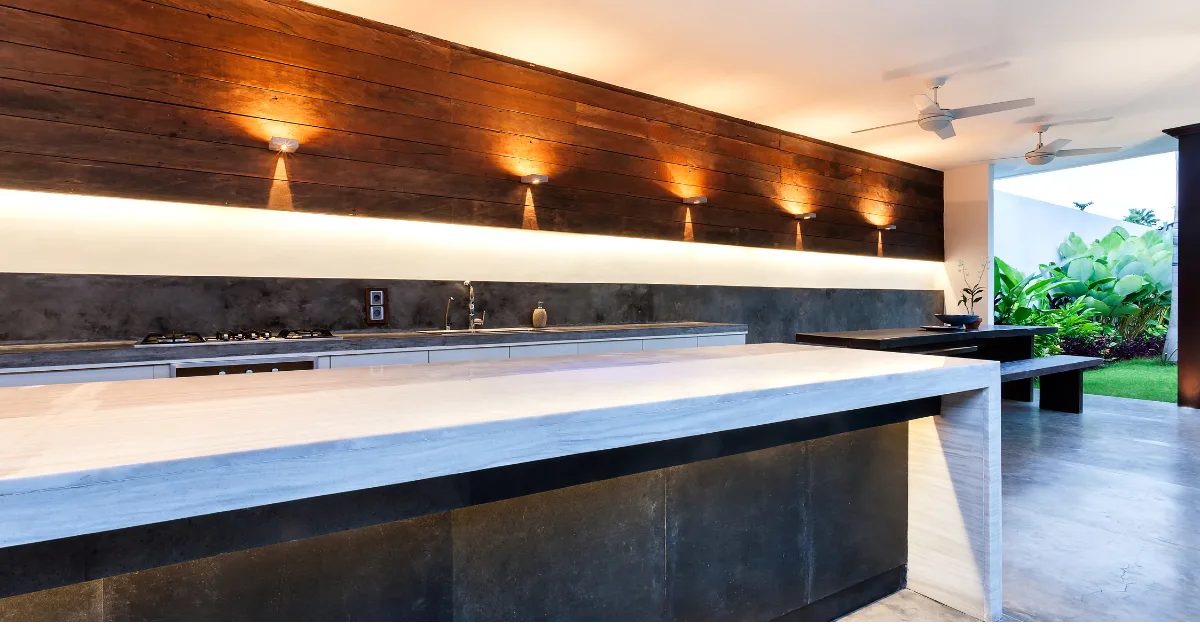
Breeze and Cuisine: Exploring Ceiling Fans in the Kitchen
As someone who enjoys cooking, I know how important it is to have a comfortable and well-ventilated kitchen. A ceiling fan is a popular home appliance that can help you achieve a cooler and more comfortable environment in your kitchen.
Ceiling fans are mechanical devices that are suspended from the ceiling of a room. They are designed to circulate air in the room, creating a cooling effect. Ceiling fans consist of a motor, blades, and a mounting system. The motor drives the blades to rotate, which in turn creates a flow of air.
Ceiling fans come in different shapes, sizes, and designs. Some have lights attached to them, while others have remote controls for convenience. There are also ceiling fans that are designed specifically for outdoor use, such as on patios or in gazebos.
Ceiling fans are a great alternative to air conditioning units, especially in areas with mild climates. They are energy-efficient and can help reduce your electricity bill. Additionally, ceiling fans can be used in conjunction with air conditioners to improve their efficiency and reduce their workload.
Overall, a ceiling fan is a simple and effective way to improve the air circulation in your kitchen. With a variety of options available, you can choose a ceiling fan that matches your style and budget.
Why Might You Want to Install a Ceiling Fan in Your Kitchen?
As someone who enjoys cooking, I know that the kitchen can get quite stuffy and hot with all the appliances running. That’s where a ceiling fan can come in handy. Here are a few reasons why you might want to consider installing a ceiling fan in your kitchen:
Improves Air Circulation
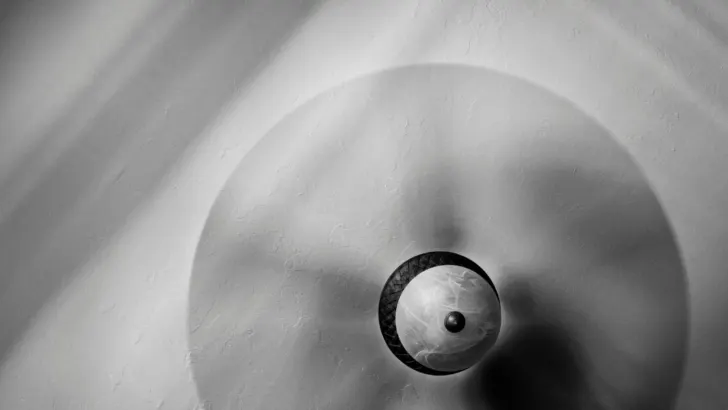
Cooling Cuisine: Benefits of Having a Ceiling Fan in the Kitchen
One of the main reasons to install a ceiling fan in your kitchen is to improve air circulation. If your kitchen doesn’t have proper ventilation, then a ceiling fan is a great way to improve the room’s temperature and make your time in the kitchen more bearable. Cooking can produce a lot of smoke, odors, and heat, and a ceiling fan can help to move those things around and out of the kitchen.
Provides Additional Lighting
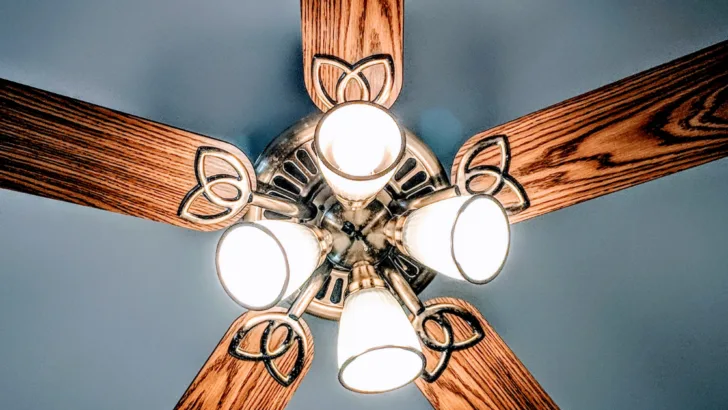
Lightening Ambiance – Enhancing Your Kitchen with a Ceiling Fan
Ceiling fans often come with built-in lighting, which can be a great addition to your kitchen. If you have a small kitchen or don’t have a lot of natural light, a ceiling fan with a light can help to brighten up the space and make it feel more open and inviting.
Saves Energy and Money
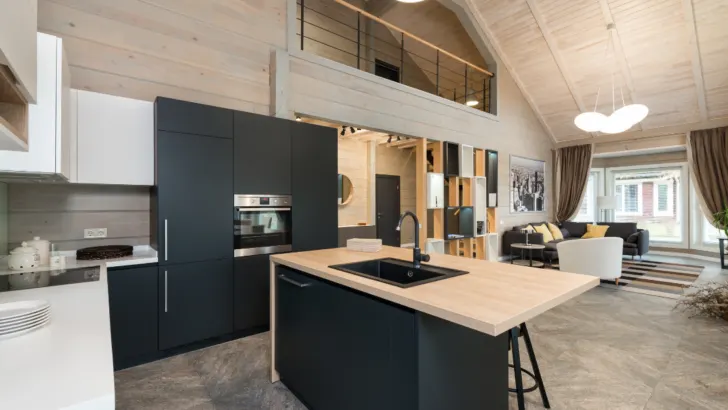
Design and Function: Kitchen Ceiling Fan Insights
Ceiling fans are an energy-efficient way to cool down a room, which can help to save you money on your energy bills. By using a ceiling fan in conjunction with your air conditioning, you can raise the thermostat a few degrees and still feel just as comfortable. This can lead to significant savings over time.
Adds Style and Personality
Lastly, a ceiling fan can be a stylish addition to your kitchen. With so many different styles and designs available, you can find a ceiling fan that complements your kitchen’s decor and adds a personal touch to the space. Plus, a ceiling fan can be a great conversation starter when you have guests over for dinner.
Overall, there are many reasons why you might want to consider installing a ceiling fan in your kitchen. From improving air circulation to saving energy and adding style, a ceiling fan can be a practical and attractive addition to any kitchen.

Revamping Your Kitchen: Ceiling Fans as Functional Decor
What Are the Pros and Cons of Having a Ceiling Fan in Your Kitchen?
As a homeowner, I have often wondered whether having a ceiling fan in the kitchen is a good idea or not. After doing some research and considering my own experience, I have compiled a list of pros and cons to help you make an informed decision.
Pros
- Improved Airflow and air circulation
A ceiling fan can help improve airflow in the kitchen, making the space more comfortable to work in. Cooking can often lead to a buildup of smoke, odors, and heat, and a ceiling fan can help to circulate the air and prevent stagnant air pockets. This can help to keep the air fresh and reduce the risk of heat-related illnesses.
In addition to improving airflow, a ceiling fan can also help to reduce noise levels in the kitchen. The fan can help to disperse sound waves, making the kitchen feel more peaceful and relaxing.
- Cooling Effect
A ceiling fan can also help create a cooling effect in your kitchen, especially during hot summer months. This can help reduce the need for air conditioning and save you money on your energy bills.
- Removes Cooking Smells
Cooking smells can easily linger in your kitchen for hours, if not days. A ceiling fan can help remove these smells by circulating the air and pushing them out of your kitchen.
- Natural Bug Deterrent
Ceiling fans can also act as a natural deterrent for pesky bugs, such as flies. The constant rotating movement of the fan can make it difficult for bugs to land and stay in one place.
- Energy saving
A ceiling fan can help to reduce your energy bills by allowing you to rely less on your air conditioning system. By circulating cool air in the summer and warm air in the winter, a ceiling fan can help to keep your kitchen at a comfortable temperature without having to constantly adjust the thermostat.
- Aesthetically pleasing
Ceiling fans can be a stylish addition to any kitchen. With a variety of designs and finishes available, you can find a fan that complements your decor.
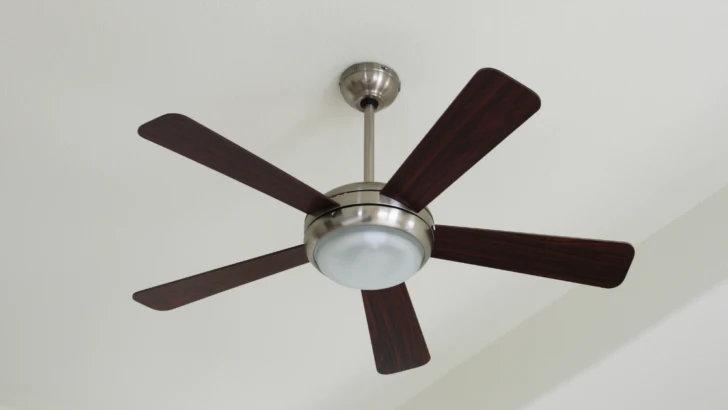
Overhead Breeze: Exploring Kitchen Ceiling Fan Options
Cons
- Noise
Ceiling fans can be noisy, especially if they are not installed properly or if they are not well-maintained. This can be a distraction while you are cooking or entertaining guests.
- Safety Hazard

Stirring Up Airflow: Pros and Cons of Kitchen Ceiling Fans
Ceiling fans can be a safety hazard if they are not installed properly or if they are not used correctly. Make sure to follow all safety guidelines and keep the fan away from any flammable materials.
If your kitchen has low ceilings or is cramped, a ceiling fan may not be the safest option. Be sure to measure your space carefully before installing a fan to ensure that it will not pose a hazard.
Here are some additional safety tips for ceiling fans in kitchens:
- Install the fan at least 7 feet from the floor.
- Keep the fan blades clean and free of grease and dust.
- Do not use the fan if it is damaged.
- Turn off the fan before cleaning it.
By following these safety tips, you can help to prevent accidents and keep your kitchen safe.
- Cleaning
Ceiling fans can be difficult to clean, especially if they are installed in a high location. Dust and dirt can accumulate on the blades and can be difficult to remove, so be prepared to clean regularly.
Overall, whether or not to install a ceiling fan in your kitchen comes down to personal preference and the unique needs of your space, so consider the pros and cons carefully before making a decision.
Hints and tips!

Cooking Comfort: The Role of Ceiling Fans in Kitchens
As someone who spends a lot of time in the kitchen, I know how important it is to have proper ventilation and air circulation. That’s why many people wonder if it’s possible to have a ceiling fan in the kitchen. In this section, I’ll cover the different types of ceiling fans for kitchens, the importance of proper installation, and the latest trends in ceiling fan design.
The Different Types of Ceiling Fans for Kitchens
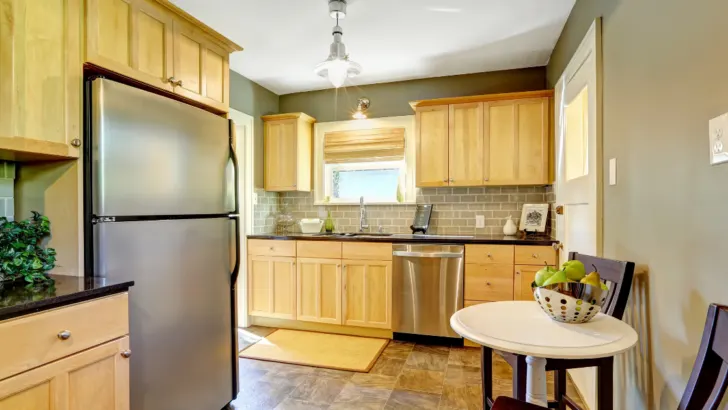
A Spin on Kitchen Ventilation: Ceiling Fan Considerations
When it comes to choosing a ceiling fan for your kitchen, there are a few different types to consider. First, you’ll want to decide if you want a fan with a light or without. If you have good lighting in your kitchen, you may not need a fan with a light. However, if you have a dimly lit kitchen, a fan with a light can be a great option.
Next, you’ll want to consider the size of the fan. For a small kitchen, a 36-inch fan is usually sufficient. For larger kitchens, you may want to go up to a 52-inch fan. It’s also important to choose a fan with the appropriate CFM (cubic feet per minute) rating to ensure adequate airflow.
Finally, you’ll want to choose a fan that is wet-rated or damp-rated. This means that the fan is designed to withstand moisture and can be safely used in a kitchen environment.
The Importance of Proper Installation

Above the Stove: Kitchen Ceiling Fans Explored and installation tips
Proper installation of a ceiling fan in the kitchen is crucial for both safety and performance. It’s important to have a licensed electrician install the fan to ensure that it is wired correctly and securely mounted to the ceiling.
Additionally, it’s important to install the fan at the proper height. The fan blades should be at least 7 feet above the floor and 8-9 feet above the cooking surface to prevent any accidents.
Finally, it’s important to choose a fan with the appropriate downrod length for your ceiling height. This will ensure that the fan is properly balanced and doesn’t wobble or make noise.
The Latest Trends in Ceiling Fan Design
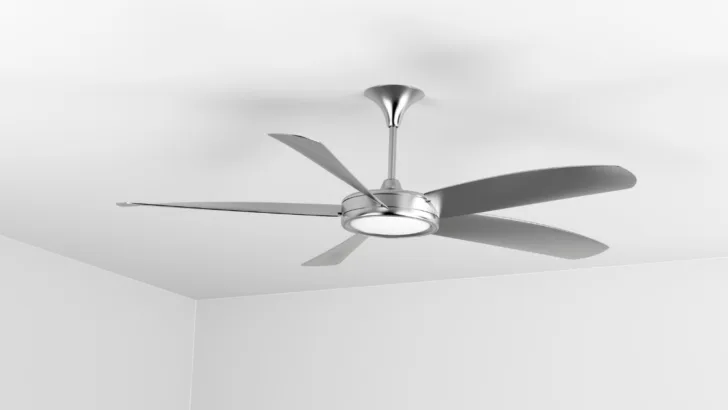
Stylish Solutions: Incorporating Ceiling Fans in Your Kitchen
Ceiling fans have come a long way in terms of design in recent years. Today, there are many stylish options available that can complement any kitchen decor.
One popular trend is the use of wood blades, which can add warmth and texture to a kitchen. Another trend is the use of LED lighting, which is energy-efficient and long-lasting.
Finally, many manufacturers are now offering smart ceiling fans that can be controlled with your smartphone or voice commands. This can be a convenient option for those who want to adjust the fan speed or turn on the light without getting up from the kitchen table.
Overall, a ceiling fan can be a great addition to any kitchen, as long as it is installed properly and chosen with care. By considering the different types of fans available, the importance of proper installation, and the latest trends in fan design, you can find a fan that will keep your kitchen cool and comfortable for years to come.
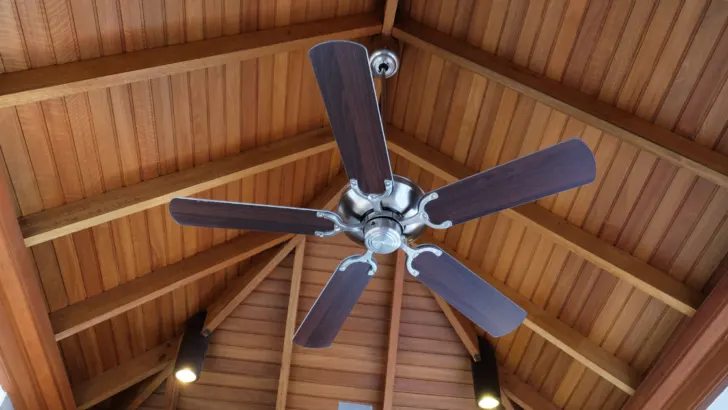
Stylish Solutions – Incorporating Ceiling Fans in Your Kitchen to add character
Additional Tips
When it comes to installing a ceiling fan in the kitchen, there are a few additional tips that I recommend keeping in mind. These tips can help ensure that your ceiling fan is installed safely and effectively, and that it provides the level of cooling and ventilation that you need in your kitchen.
Firstly, it’s important to choose the right size of ceiling fan for your kitchen. A fan that is too small won’t effectively cool the space, while a fan that is too large may be overpowering and create too much airflow. To determine the right size, measure the square footage of your kitchen and refer to a ceiling fan sizing chart.
Secondly, consider the placement of your ceiling fan. Ideally, the fan should be centered in the room and hung at a height of at least 7 feet above the floor. This will ensure that the fan can circulate air effectively without interfering with any kitchen appliances or cabinets.
Thirdly, make sure that your ceiling fan is installed by a professional electrician. This will ensure that the fan is safely and securely attached to the ceiling, and that all wiring is properly connected and grounded.
Finally, consider the style and design of your ceiling fan. While functionality is important, you also want a fan that looks great in your kitchen. Look for a fan that complements your existing decor and adds to the overall aesthetic of your space.
By keeping these additional tips in mind, you can ensure that your ceiling fan installation is a success and that you enjoy all the benefits of a cooler, more comfortable kitchen.

A Fresh Perspective: Kitchen Ceiling Fans Unveiled
Frequently Asked Questions
Can a ceiling fan be installed in a kitchen?
Yes, a ceiling fan can be installed in a kitchen. In fact, it can be a great addition to any kitchen, especially during the hot summer months. It is important to ensure that the ceiling fan is installed properly, and that it is the appropriate size for the room.
What are some good ceiling fan options for a kitchen?
When choosing a ceiling fan for a kitchen, it is important to consider the size of the room, the style of the kitchen, and the amount of light that is needed. Some good options include flush mount ceiling fans, low-profile ceiling fans, and ceiling fans with lights.
Is it safe to have a ceiling fan in the kitchen?
Yes, it is safe to have a ceiling fan in the kitchen as long as it is installed properly and maintained regularly. It is important to ensure that the fan is not too close to any cabinets or other objects, and that it is turned off when not in use.
Where is the best location to install a ceiling fan in a kitchen?
The best location to install a ceiling fan in a kitchen is in the center of the room, where it can provide the most airflow. It is important to ensure that the fan is not too close to any cabinets or other objects, and that it is installed at the appropriate height.
What are the benefits of having a ceiling fan in the kitchen?
Having a ceiling fan in the kitchen can provide several benefits, including improved air circulation, increased comfort, and reduced energy costs. It can also help to reduce cooking odors and smoke, and can be a stylish addition to any kitchen.
What size ceiling fan is appropriate for a small kitchen?
For a small kitchen, a ceiling fan with a blade span of 36 inches or less is appropriate. It is important to ensure that the fan is not too large for the room, as this can cause it to be less effective and can also be a safety hazard.
I hope this article has been helpful. If you have any questions, please feel free to leave a comment below.
